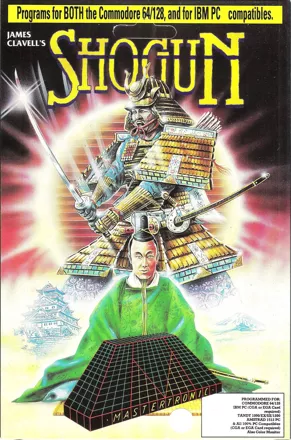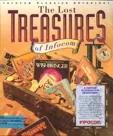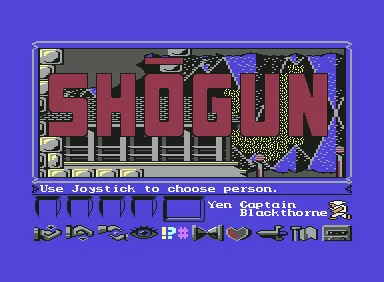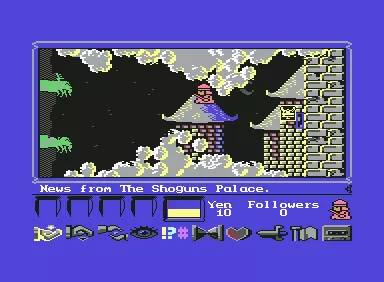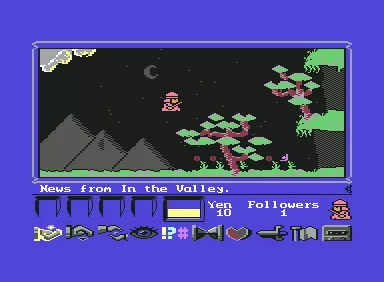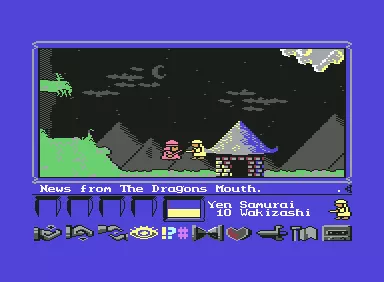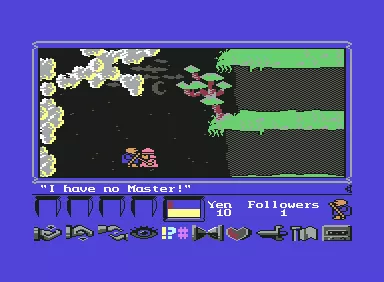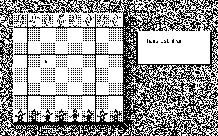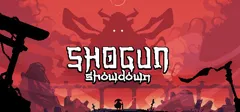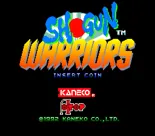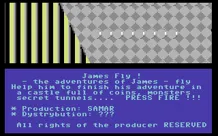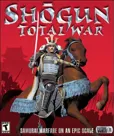James Clavell's Shogun
Description official descriptions
Wait, you say, wasn't this an Infocom title? Actually, this one came out first on the budget publisher Mastertronic's catalog. It's a vastly different game than the Infocom one - you wander around as one of a number of characters trying to build up your rapport with the people, doing battle and working your way up to becoming a shogun.
Groups +
Screenshots
Credits (Commodore 64 version)
4 People
| Inspired by the Bestselling Novel from | |
| Game Concept | |
| Commodore Version Designed by | |
| Commodore Version Programmed by | |
| Commodore Graphics Created by |
Reviews
Critics
Average score: 71% (based on 6 ratings)
Players
Average score: 3.6 out of 5 (based on 14 ratings with 2 reviews)
Perhaps the oddest game to take 16th century Japan seriously.
The Good
The game was based in a fictional account of medieval Japan. Unlike so many computer games from the late eighties, this game didn't sell out the whole culture aspect for sheer violence or 'karate action'.
Although an extremely odd game, it has a very aesthetically pleasing feel to it. The screens are all depicted from the side, yet your character has free motion, which gives the appearance of flying about, even up into the sky. The various locations are stylistically displayed and even each individual person you can run into looks somewhat different than the rest. After a few sessions you start to pick out characters without having to refer to their names.
Interaction with the characters is down through a simple, but effective icon menu of various actions. You can greet people, play docile to them, take an air of superiority, or attack them. Eventually, you'll begin to befriend others, and can start using them to help you in your goal. They will defend you, scout about, or attack your enemies. Whether under your control, someone else's, or independent, these people will carry on by themselves, moving about, picking up whatever they feel like, and dropping them wherever they wish. This gives the world a very distinctive life and almost reminds me of a graphical 'Knight Orc' in the way everyone does their own thing.
Given that you can change who you are (anything from a powerful daimyo like Toranaga to the gaijin Blackthorne to the lowest of peasants) and that the locations of some items are random (and others are moved about by people anyway), the game has a lot of replay value.
The Bad
Perhaps it was just my age at the time, but I don't recall every successfully completing the game. The goal of becoming Shogun was vague and it seemed like you spent hours befriending people without any obvious benefit aside from having people who would probably do what you wanted them to.
The graphics, while interesting in my opinion, might be too surreal for some people's taste. Walking into a four samurai battle and watching everyone flying about waving what looks more like yard sticks than katana may scare people away.
The world was huge and took many, many game sessions to learn where locations were in general, much less exactly. You'd often get reports of something happening at one location, but everything would be all over by the time you wandered there...sometimes frustrating when you were actually two screens away, but took the long way. I don't remember the manual providing a decent map.
The Bottom Line
Coming out before the Infocom game of with the same title, Shogun is similarly based on the Clavell book with the same name. You take the role of John Blackthorne or one of a score of other characters from the book and journey about a surreal Japanese landscape (including such places as 'The Seventh Heaven'), gathering followers and eventually trying to be the greatest force in the game.
An older, title with aged graphics that were 'quirky' for even their time, this is not a game for everyone, but fans of Mastertronic games, or those curious about Japanese culture/things based off the book 'Shogun' may want to take a look.
DOS · by Ray Soderlund (3501) · 2000
Odd but strangely addictive little beauty
The Good
This game is based on James Clavell's famous novel: Shogun (which I was a big fan of the mini-series). Arigato Bakero-San.
This is a funny old little game as it's probably the only one of its kind, this refers to the game perspective and overall gameplay. The game obviously defies any law of gravity, as there doesn't seem to be any. If the game had a "top-down" perspective, it wouldn't look odd, but the fact that the little characters are running about from a "sideway perspective" looks like their virtually flying around.
The game objective is quite clear from the title: Shogun, although the thing is not about being a Shogun, but becoming a Shogun. Anyone in the game can become a Shogun: there are certain requirements that must be fulfilled, among others you have to have a certain number of followers, and obtain certain sacred and ceremonial items, among other a Buddha Statute.
The game consists of all characters in the novel, from Captain Blackthorn to Lord Torananaga and Lord Ishido, totalling more than 20 characters of which you can choose any one as your hero!
Each character in the game though acts in accordance to the novel...well at least in the beginning. The samurai are usually one of the strongest character types in the game in comparison to peasants. In accordance to the novel, some characters like Lord Ishido and Toranaga already start with followers, thus to a certain extent makes it a lot easier to become a Shogun, in comparison if you play as a "peasant class" character.
Gameplay consists of either socializing or item collection. Socializing usually revolves around gaining followers which do in fact follow you around. There are a lot of social actions you can carry out such as befriending, attacking, giving items, or giving order to followers.
Item collection, well clearly is self-explanatory. Some items are more useful than others. Items worth holding on to (except items needed to become a Shogun) are shields, helmets, swords or practically anything that has to do with battle. Other items are practically useless unless for gaining followers such as diamonds. Other random items are food such as sake and fish. Food randomly generates in secluded areas (such as dungeons or tunnels) is invaluable especially if you've just had a fight with another character.
Speaking of fighting, battles are quite simple and have an odd effect. Fighting is simple just "bumping" into the other character in combat mode until someone either runs away or dies. Those who die turn into an ugly pink skull like graphic. The funny thing is that no one really "dies" in the game. After awhile they get "reborn"...but there's a catch. They turn into "new characters". They still have the same name, but more than often a new character class. Peasant who die may be reborn into a samurai, vice versa. The game practically doesn't end unless you want it to end by either being a Shogun or die in the process.
The game also comes up with a non-stop information board, similar to the stock market which gives information on everything that's happening in the game. If someone dies, you'll know about it. If someone is attacked, you'll know about it. Quite odd considering this is medieval Japan and mobile phones weren't created yet. Doh.
The graphics were an interesting touch to the game. It resembles many artistic Japanese drawings during that era which really helped big time in creating the medieval Japan atmosphere.
The Bad
Plot. None actually, although regardless, it was strangely addictive. But it only get's addictive for only so many tries. The lack of plot and storyline makes the game practically a never ending arcade game rather than an adventure game.
The game needed some upgrades in character socializing. In many cases, it's easy to gain a follower. But it's also as easy for them to lose loyalty in you and serve someone else, something uncommon in a nation that "used" to believe in the honor code. You never really can keep track of your followers. Sometimes you don't even know if the next guy is a follower unless he or she is "befriending" you. Other times, I end up killing followers since they keep picking up my "stash".
The Bottom Line
Nice little gem. If you loved the novel, you'll love the game.
DOS · by Indra was here (20735) · 2004
Discussion
| Subject | By | Date |
|---|---|---|
| Shogun | simon squillace | Nov 17, 2007 |
Analytics
Identifiers +
Contribute
Are you familiar with this game? Help document and preserve this entry in video game history! If your contribution is approved, you will earn points and be credited as a contributor.
Contributors to this Entry
Game added by Old man gamer.
Amstrad CPC added by Kabushi. Commodore 64 added by Martin Smith.
Game added June 21, 2000. Last modified September 2, 2024.


